Ballintober
Houses within 15km of this house
Displaying 49 houses.
Houses within 15km of Ballintober
Displaying 49 houses.
| House name | Description | |
|---|---|---|
| Odell Ville | This house was occupied by John Odell in the early 1850s and held by him in fee. It was valued at almost £14. The house was the residence of William Odell in the 1870s. Home of the Morony and Lloyd families in the late 19th and 20th centuries. Occupied by Wilfrid H. Wilkinson in 1906. It was advertised for sale in February 2009. |

|
| Cahermoyle/Cahirmoyle | The present house was built in the early 1870s by Edward O'Brien, son of William Smith O'Brien replacing an earlier house which was the home of his grandmother the Dowager Lady O'Brien in the early 1850s. The Ordnance Survey Field Name Book states that Cahermoyle was held from Lord Southwell. The house was valued at £81+ in 1906 and sold by the O'Briens in 1919. In 1988 Cahermoyle and 200 acres were offered for sale by the Oblate Fathers who had had a Novitate there since the early 20th century. The house is now a nursing home. |
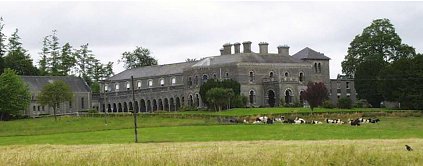
|
| Glenastar Cottage | Occupied by William Osward circa 1840 and described as a large house of 2 storeys. Held by William R. Yeilding in fee at the beginning of the 1850s and valued at £7.5 shillings. The residence of Richard M. Yielding in 1814. |

|
| Glenville | The Massys lived at Glenville from the 1760s. The present house was built by William Massy in 1808. William Massey was resident in 1814, J. Massey in 1837 and William Massy in the early 1850s. William Massy held the house valued at almost £14 from Stephen Creagh. The house came into the possession of the Langford family, relations of the Massys in the early 20th century and they were still resident there in the 1970s. |
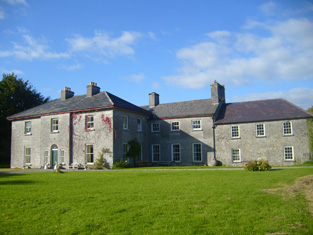
|
| Enniscoush | Home of a junior branch of the Castle Hewson family, occupied by John Hewson at the time of Griffith's Valuation when the house valued at £18 was held from the Wandesford family. | |
| Elm Hill | An 18th century house the home of a branch of the Studdert family held from Lord Southwell. Occupied by Ion Studdert in the mid 19th century when the buildings were valued at £27. It was advertised for sale in June 1855 when it contained a "spacious and lofty parlour, drawing room and hall; nine capital bedrooms..". A lithograph of the house is included with the rental. In 1906 this house, valued at £16, was occupied by the representative of Thomas Magner. In the later twenteth century owned by the Woulfe family and now derelict. |
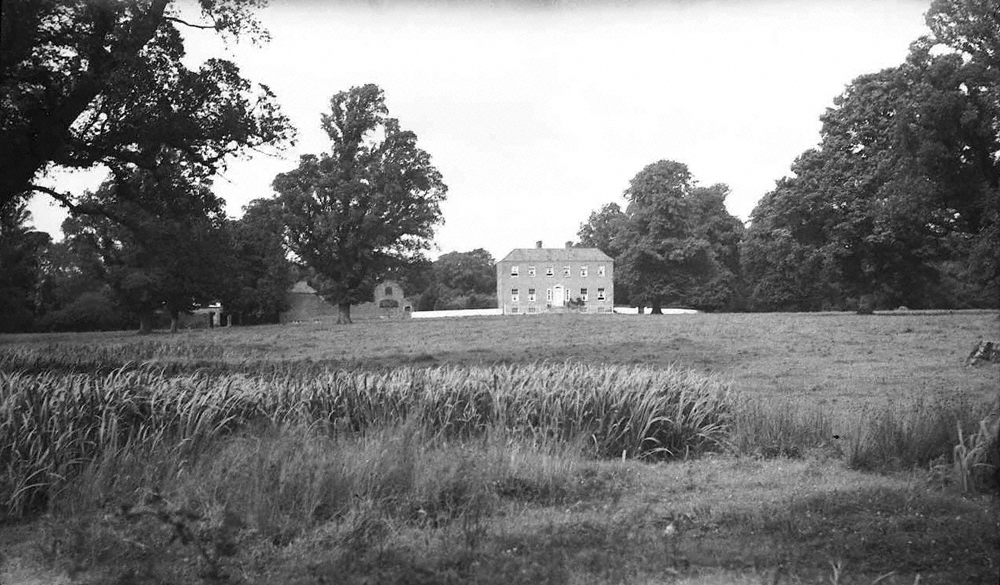
|
| Danesfort | A residence of the Brown family occupied by Henry Brown in 1814, by Mrs Brown in 1837 and by Henry Brown circa 1840. John S. Brown is recorded as the occupier at the time of Griffith's Valuation, holding the property from the Honourable C.B.C.S. Wandesford. It was valued at £8. | |
| Springmount | Richard S. Croker was the proprietor of this townland at the time of the first Ordnance Survey and Springmount was the residence of William Brown. By the time of Griffith's Valuation Gerard Barry held the house and 56 acres in fee. | |
| Wilton | The home of W.K. Brown in 1837 and of Edward Brown at the time of Griffith's Valuation when the buildings were valued at £16. | |
| Court Lodge | Described as a small lodge, the residence of Tobias Delmege at the time of the first Ordnance Survey. Occupied by Pierce Brown and held from Lord Southwell at the time of Griffith's Valuation when the buildings were valued at £10. This house is now the home of a dairy farmer. |
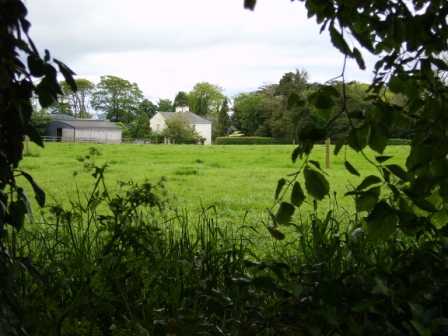
|
| Kilscannell | Occupied by Richard Condon in the 1830s. Located on the estate of Lady O'Brien circa 1840 this was a large house of two stories with offices but in a state of bad repair and unoccupied. It was still vacant at the time of Griffith's Valuation and held by Pierce Brown. | |
| Chesterfield | Occupied by Maurice P. O. [P]helan in 1814 and by Major Sullivan in 1837. Held from the Major's representatives in the early 1850s and occupied by Francis Brown. The buildings were valued at £18. There is a modern house at the site but the stableyard and farm buildings still survive. |
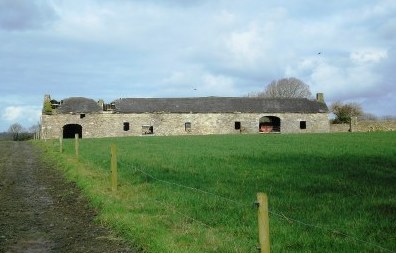
|
| Dromin | This house was the home of Nicholas Meade in 1837 and of his representatives in the early 1850s. It was located on the Devon estate and was valued at £13. It is still extant and occupied. |

|
| Moyveedy | A house on the Devon estate valued at £10 and occupied by Thomas Fitzgerald in the early 1850s. The house is still extant and part of a large farm. |

|
| Cloonyscrehane | This house, located on the Devon estate, was valued at £12 at the time of Griffith's Valuation and was the residence of Patrick Candon. A house and farm are still extant at the site. | |
| Cullenagh | This house, situated on the outskirts of Newcastle West, was the home of Patrick Griffin in 1814 and at the time of Griffith's Valuation. Valued at £27 it was held from the trustees of the Earl of Devon. The house remained until the mid 20th century but is no longer extant and a large industrial complex exists to the rear of the site. | |
| Woodlawn | A house on the Devon estate occupied by George Bolster, medical doctor, at the time of Griffith's Valuation and valued at £11+. Woodlawn was the residence of R. Cart in 1837. It is still extant. | |
| Lissurland | This was an O'Brien home located on the Devon estate. Occupied by Connor O'Brien in 1814 and Henry O'Brien in the early 1850s, when the buildings were valued at £12. The house survived into the 20th century but is no longe extant. | |
| Newcastle | The original Fitzgerald castle was granted to the Courtenay family in 1591. The Castle was occupied by David Mahony and his son, Pierce Mahony, in the mid 18th century. Bence Jones writes that the residence of the Earls of Devon in county Limerick was a house of nine bays in the castle precincts. It was held by them in fee and valued at £55 at the time of Griffith's Valuation. This house was occupied by the agent to the Devon estate. Slater describes it as Courtenay Castle in 1894 when it was occupied by Charles Curling. In 1910 it was bought by the Curling family who had been agents and was burnt in 1922. The Castle remained in the possession of the Curlings until the 1940s. |

|
| Springfield Castle | Originally a Fitzmaurice residence adjoining a tower-house of the Fitzgeralds, this house passed by a marriage in 1775 to the Deane family, Lords Muskerry. It became their main residence in the late 18th century and throughout the 19th century. In 1786 Wilson refers to it as " a very fine seat with extensive demesnes". At the time of Griffith's Valuation the Honourable Robert Fitzmaurice Deane was residing at Springfield which was valued at £45. The house was burnt in 1923 and a 19th Gothic wing was made into a new house, which may now be rented as self catering accommodation. |

|
| Hernsbrook | A property in the possession of the Ahern family for two centuries. At the time of Griffith's Valuation Maurice Ahern held the property in fee. The buildings were valued at £8. There is still an extant house at Hernsbrook. | |
| Ballynakill | A house valued at £8 at the time of Griffith's Valuation and occupied by Godfrey Massy who held the property from Laurence H. Jephson. Lewis also records Godfrey Massy as resident in 1837. A lithograph of this house is included in the Jephson sale rental of 1851. | |
| Feohanagh | There is no large house marked on the first Ordnance Survey map for this townland, however by the time of Griffith's Valuation in the early 1850s a house valued at £10+ was recorded in Feohanagh. It was occupied by James Wigmore and held from Viscount Lismore. [Grid reference is approximate] | |
| Garryduff | This house was the residence of David Hayes in 1814. At the time of Griffith's Valuation it was occupied by the representatives of William Leake [a Limerick solicitor], who held the property from Robert Maunsell. The buildings were valued at £10+. Recorded as untenanted at the time of the sale in 1853, a lithograph of the house is included in the sale rental. | |
| Glenduff Castle | This house was the residence of Jones Stavelly in 1814. Lewis records R.J. Stevelly as the occupier of Glanduff Castle under the parish of Newcastle and Eyre Massy under the parish of Monagay. Eyre Massy was residing at Glanduff, valued at £38, in the early 1850s. Glanduff Castle was a residence of the Ievers of Mount Ievers, county Clare, in the late 19th century as Slater notes it as a residence of James Butler Ievers. Burnt in 1922 this house is now a ruin. |

|
| Mount Plummer | This house was the home of the Plummer family in the 19th century, occupied by B. Plummer in 1814, by Brudenell Plummer in 1837 and by the Reverend Richard Plummer in the early 1850s. The Reverend R. Plummer held the property from the Dowager Lady O'Brien and the buildings were valued at £10. | |
| Ballynoe | An 18th century house built by the Cox family. This house valued at £39 was the home of William Cox in the 1850s and 1870s. At the time of Griffith's Valuation it was held from the Court of Chancery. Bence Jones records this house as now derelict. Described as the Irish Tourist Association surveyor in 1944 as a "grand" Georgian house but in a very bad state of repair. |

|
| Rossmore | Rossmore was the home of the Shelton family in the 18th and 19th centuries, occupied by J. Shelton in 1814 and 1837. The Reverend Grantley Shelton was resident in the early 1850s. The house was held from the Conyers family and was valued at £25. In 1894 Slater refers to it as the residence of Deane Shelton. | |
| Heathfield House | Located on the Warren estate this house was occupied by Edward Lloyd circa 1840 and in the early 1850s who held it along with 609 acres. Still in Lloyd occupation in the 1970s. This house was offered for sale in 2010. | |
| Frankfort | Samuel Adams was living at Frankford, Newcastle, in 1814. The residence of Richard Standish circa 1840 and of John White who held it in fee in the early 1850s. The buildings were valued at £9. This house is still well maintained and occupied. | |
| Ballyneale | Bence Jones writes of this house having an early 19th century appearance. Occupied by John Cox and held from the Honourable John Massy in the early 1850s. The buildings were valued at £13+. At the end of the 20th century this house was the home of Lewis Glucksman. Sold by the Glucksmans in 1998. In 2008 it was placed on the market again by its current owner David Pearl for 10,000,000 euro. see http://www.michaelhdaniels.com/index.cfm?fuseaction=propdetails&Prop_RefId=39 |

|
| Glenwilliam | A house built in 1797 by the Reverend William Massy, second son of the Reverend Godfrey Massy. Occupied by George Massy in 1814. The residence of Mary Anne Massy at the time of Griffith's Valuation, held from the Court of Chancery and valued at £38. In the later 19th century it was the home of the Atkinson family. Slater noted it as the seat of Thomas D. Atkinson in 1894. This house is still extant and occupied. |

|
| Castletown Conyers | The seat of the Conyers family, occupied by C. Conyers in the early 19th century. By the time of Griffith's Valuation the house appears to be in use as an auxiliary workhouse, held by the Croom Guardians from William Bailey, medical doctor, and valued at £25. In 1894 it was the residence of Charles Conyers. |

|
| Kilmurry | A house valued at £11 and held by Eyre Lloyd in fee at the time of Griffith's Valuation, now derelict. |
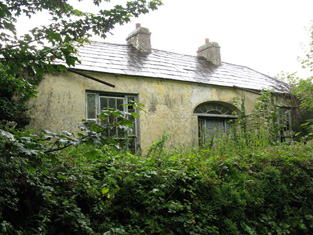
|
| Knockaderry | Knockaderry was the seat of a branch of the Evans family in the 19th century. In 1786 Wilson refers to it as the seat of Mr. D'Arcy. It was occupied by Thomas D'Arcy Evans in 1814. Lewis refers to it as the "ancient seat of the D’Arcy family", the present residence of T.D’Arcy Evans. At the time of Griffith's Valuation it appears to have been in use as an auxillary work house, valued at £35. Knockaderry was held from the Jephson family and a lithograph of the house is included in the Jephson sale rental of 1851. In 1944 the Irish Tourist Association surveyor writes that the house was not well kept and was "rapidly falling to pieces". He also records the house as the birthplace of Mary Lady Heath, an early female pilot. |
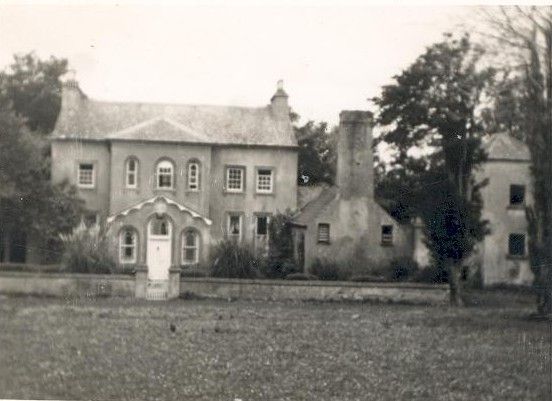
|
| The Turret | Lewis writes that the Turret was erected by a branch of the De Lacy family and repaired by Colonel O’Dell in 1683 and was "lately the residence of Major O’Dell". The Ordnance Survey Name Books refer to an inscription on the wall of the building which recorded the O'Dell family inhabiting the building in 1683. It was reputed to incorporate a turret from an old house of the Knights Hospitallers. Thomas O'Dell was resident in 1814 and Mrs O'Dell of the Turret, Ballingarry, died in 1818 according to the church records of that parish. Fitzgerald in 1826 refers to Jackson's Turret, built on a hill and "now nearly in ruins". Bence Jones writes that a porch and wing were added to the building in the late 19th century and that it became a presbytery. Grid reference is approximate. | |
| Castleview | Occupied by Brian Sheehy in 1814 and by Thomas Locke in 1837. At the time of Griffith's Valuation Castleview was the residence of the Rev Robert M. Rodwell, the buildings were valued at £30. Birthplace of William John Locke Travers in 1819, a New Zealand lawyer, politican and naturalist, see http://www.teara.govt.nz/1966/T/TraversWilliamThomasLocke/TraversWilliamThomasLocke/en | |
| Ashgrove | Ashgrove was the home of the Upton family in the 18th century. Occupied by John Upton in 1814 and J.W. Upton in 1837. This house was being used as an Auxiliary Workhouse at the time of Griffith's Valuation. William Stephenson held the townland at this time. His interest was advertised for sale in June 1854. The tenant was Mr Denis Moylan who held on a 7 year lease from May 1852. A house is still extant at this site. | |
| Glenastar | Glenster was occupied by Samuel Upton in 1814 and by J.U. Upton in 1837. Described at the time of the first Ordnance Survey as a small thatched house of one storey, the residence of John Upton. By the time of Griffith's Valuation the townland of Glenastar was held by the representatives of John Upton. The highest value on any house in the townland was £1.15 shillings and it was held by them in fee. A house is still extant at Glenastar. | |
| Ballynabearna | Occupied by William J. Upton in 1814 and by W. Upton in 1837. This house was valued at £2 in the early 1850s and held by John Upton from Sir Robert Bateson. the building labelled Ballynabearna House on the 1st edition Ordnance Survey map is not the same as the house on the later 25-inch map of the 1890s. Buildings are still extant at the site. | |
| Ashborough | Lewis records Daniel D. Power as resident at Ash Grove in the parish of Ballingarry in 1837. Held Daniel D. Power at the time of Griffith's Valuation and valued at £16 and in his occupation at the time of the 1854 sale. An old outbuilding remains at the location of this house. |
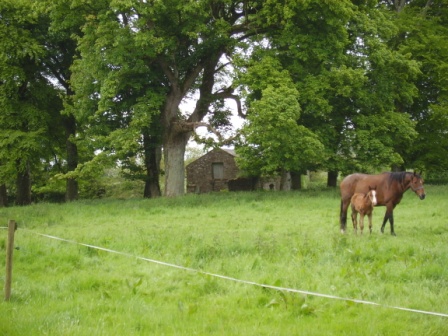
|
| Tullylease | Hajba writes that the Morgans [Morgells] had an interest in this house through marriage with the Sullivans. Occupied by John Sullivan in 1814 and partly rebuilt by William Sullivan in the 1830s. Occupied by William Sullivan in the early 1850s and held from the representatives of Crosbie Morgel, when it was valued at £15.15 shillings. Acquired by James Lynch at the end of the 19th century and restored by the present owners. |
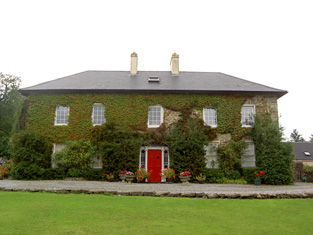
|
| Fortwilliam | A house on the Evans estate occupied by William Barry at the time of Griffith's Valuation when it was valued at £23, later a Sheehy residence. The Sheehy sale rental of 1875 records the house containing 3 reception rooms and 5 bedrooms. It was conveyed to Robert K. Sheehy by Edward R. C. Barry on 7 January 1874 and advertised for sale in June 1875. The National Inventory of Architectural Heritage dates this Tudor Revival house from circa 1880 to the design of Sir John Jackson (1851-1919), so the present house may incorporate the earlier one which is marked on the first Ordnance Survey map. In 2006 this house was no longer occupied. |
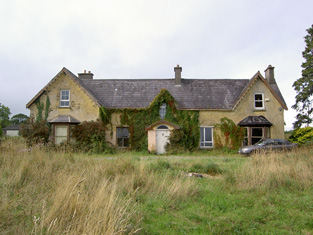
|
| Kilbolane | Home of the Barry family in the late 18th and 19th centuries located on the Evans estate. Occupied by Edward Robert Caulfield Barry in the early 1850s when the house was valued at £39. There was also a flour mill closeby. Sold by the Barrys at the end of the 19th century to David O'Leary Hannigan and later purchased by Milford Creamery who demolished the house in the mid 20th century. |
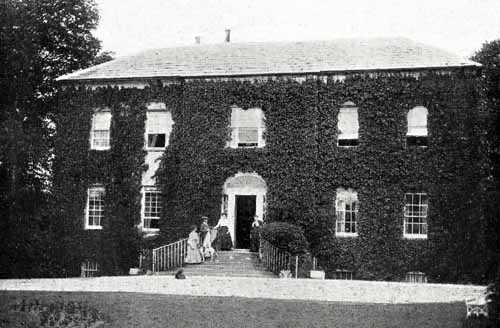
|
| Castle Ishen | Castle Ishen was the seat of the Fitzgerald family from the mid 17th century until the late 19th century. In the late 18th century the castle was replaced by the house which stands today. In the 19th century the house was occupied by the estate agents, members of the Hannigan and O'Leary families although Lady Fitzgerald, widow of the 8th Baronet, is recorded as the occupier at the time of Griffith's Valuation. She held the house valued at £10+ in fee. Her sons were both minors at the time. Hajba writes that the O'Learys purchased the house in the early 20th century. In 1944 the Irish Tourist Association Survey noted that they had first come there in the 1790s. Castle Ishen is still extant. | |
| Hardingville House | Home of the Harding family in the 19th century, occupied by C. Harding in 1837 and by William Harding in the early 1850s. The Hardings held the property from James D'Arcy Evans and the buildings were valued at £11.15 shillings. The Hardings also occupied Hardingville Cottage another residence in the same townland, Grid Reference R403 217. In the 1870s William Harding of Coolnagour owned 229 acres in county Cork. The house is no longer occupied. |
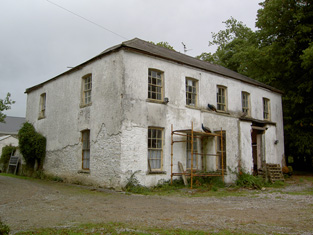
|
| Curramore | In 1906 Herbert Sullivan is recorded as the occupier of a mansion house valued at £33.5 shillings in the townland of Knockglass. The Irish Tourist Association survey records that this house was demolished by 1944. | |
| Rathfredagh | This house was erected post Griffith's Valuation. The Irish Tourist Association surveyor dates it to about 1870. It was the home of James Waller O'Grady a grandson of the 1st Viscount Guillamore and of the 3rd Baron Massy. In 1906 Richard O'Grady, eldest son of James Waller O'Grady (born 1867) was living here. The house was valued at £41.15 shillings. Seat of the 8th and 9th Viscount Guillamore and in the mid 1960s the O'Gradys gave this house to the Cheshire Homes Foundation. It opened as the fifth Cheshire Home in Ireland in 1971. http://www.cheshire.ie/centres_rathfredagh.asp |

|
| Mayne House | In 1837 Brian Sheehy was resident at Mayne and in the early 1850s Bernard Sheehy held the house valued at £21+ from John Duggan and all the townland of 107 acres. It is no longer extant. |

